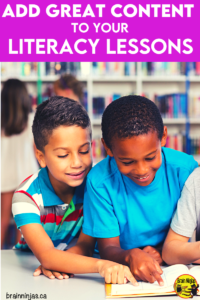
It took fifteen years of teaching and professional development before we felt confident teaching reading to students in upper elementary. Reading is one of the most important skills any teacher is responsible for, but it is often taught by stabbing at strategies until something works-only to find it doesn’t work for the next student. Literacy lessons were hard to design and we didn’t really know where to start.
The most important thing we’ve learned is that reading comprehension skills are also skills related to grammar, word parts, word families and patterns, and writing. The same skills are used in a variety of ways.
If a student missed one of these skills, they trip over it in everything other subject. By the time students get to the end of Grade Three, if they aren’t reading at grade level, they are statistically unlikely to catch up. So, what is a teacher to do?
Shift Your Literacy Lessons Beyond Sounding Out Words
The gap between Grade Three and Grade Four widens as reading strategies change from decoding to comprehending. Some students can decode but don’t understand what they’re reading. Other students cannot figure out the words, but can explain what they mean if it is read to them.
Reading intervention teachers often spend the time breaking down reading to help students build strategies for decoding and encoding words. While it seems like decoding is separate from comprehension, they are connected in many ways.
A one-size-fits-all approach doesn’t work for reading instruction. Once students get to Grade Four, there is less focus on moving up through the levels to getting deeper into them. We changed our reading groups from exclusively reading levels to comprehension skills as the focus. What a difference it made!
Roads and Potholes

Think of learning to read as a road. There will be speedbumps as students learn new words or strategies. Generally, when the road starts out, the skills needed are minimal. Strategies like “sound it out” work well.
The road starts to wind, twist up, and race down hills. Using the same strategies makes continuing difficult. Word parts need to be taught to help develop an understanding of English (even though all the words have at least one rule-breaker). There will be bridges and valleys and mountains as students start to read more and more complex texts and need to rely more and more on their reading ability to learn about other subjects.
There is a saying that young students learn to read while older students read to learn. If a student is missing some of these skills, the road just stretches out in front of them while they stay at a stop watching their classmates drive on by.
These are the potholes. Students get stuck on a few strategies, not all of them. Once these strategies are taught, the road is smoothed back out and students can catch up at an amazing rate.
If you would like to do a quick check on your student’s reading level, you can find one in our Resource Library or we can send one to you when you sign up for our email list.
We looked at our students and found the potholes. Once we started actively teaching the specific skills they needed, they made huge leaps. Some of the students made up more than a year of progress.
Repetition is Important
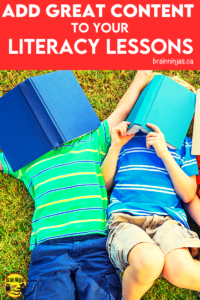
While it might be boring to you to repeat the same lessons or the same strategies with students, this repetition is what the brain uses to make connections. Most intervention programs rely on repeating the skill (usually with different content each time) to help build an understanding. Isn’t there a rule out there that you have to do something twenty-one times before it becomes a habit? This is true when using reading strategies.
If you’ve ever watched a movie or TV show more than once and caught something you didn’t notice before, you’ve benefited from repetition. This is why toddlers love hearing the same book over and over. It’s the brain’s way of processing information. Intervention teachers use the same texts over and over to teach new skills because students are confident with the words and can focus on a strategy.
We cannot assume that repetition is the easy way out, so don’t be that teacher who negatively comments on a student rereading a book. Instead, ask what they love about the book and share something you have reread (everyone has something they like to read again).
Grammar Connects to Reading
Often grammar lessons are pulled out of reading activities and taught separately. They usually look like worksheets. Not only is this boring, but it takes away the reason for learning all those word and grammar rules.
When students understand how punctuation changes how you say a sentence, they can understand how punctuation shows an author’s intent. If a student can break a word down into parts, it is easier to learn new words. When students understand the meanings of common prefixes, suffixes and roots, they begin to expand their vocabulary.
So, we started looking at how we could connect the grammar activities to our reading and there wasn’t much out there.
Weekly Reading Skills Were Born
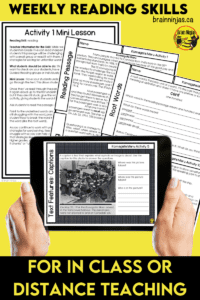
Our Weekly Reading Comprehension Skills activities came from two problems: 1. expose our students to content from social studies and science and 2. teach all the grammar-related outcomes from the English Language Arts curriculum.
We started writing short texts for our students since all the materials available were textbooks written by university professors who clearly had never spoken to nine-year-old children.
These texts turned into little grammar activities in our reading groups. We would learn prefixes, suffixes, and syllables to break down unfamiliar words. Learning these skills improved the word-solving skills of some of our students who struggled with decoding.
We started creating questions about the text beyond the “read the text and answer the questions.” They got to use their higher-level thinking skills like connecting and evaluating.
Then we started turning these little grammar exercises into activities students could work on while we met with reading groups. We regrouped our students based on the skills they needed, rather than their reading level. For example, one group needed help using context clues while another group needed to work on retelling.
Bam! We had an idea. Maybe other teachers had the same problem.
Grade Four Sets
Set 1: Natural Resources on TpT ($USD) or our BN Shop ($CAN)
Orphan Wells (Oil Energy) on TpT ($USD) or our BN Shop ($CAN)
Urban Agriculture on TpT ($USD) or our BN Shop ($CAN)
Mountain Pine Beetle (Forestry) on TpT ($USD) or our BN Shop ($CAN)
Watersheds (Clean Water) on TpT ($USD) or our BN Shop ($CAN)
Set 2: Wandering Waste on TpT ($USD) or our BN Shop ($CAN)
Whale Poop on TpT ($USD) or our BN Shop ($CAN)
Plastic Film on TpT ($USD) or our BN Shop ($CAN)
Pacific Garbage Patch on TpT ($USD) or our BN Shop ($CAN)
Waste Innovation on TpT ($USD) or our BN Shop ($CAN)
Set 3: Community Life on TpT ($USD) or our BN Shop ($CAN)
Quality of Life on TpT ($USD) or our BN Shop ($CAN)
Urban Origins on TpT ($USD) or our BN Shop ($CAN)
Rural Ghost Towns on TpT ($USD) or our BN Shop ($CAN)
Tourism on TpT ($USD) or our BN Shop ($CAN)
Set 4: Light and Shadow on TpT ($USD) or our BN Shop ($CAN)
Colour Blindness on TpT ($USD) or our BN Shop ($CAN)
Shadow Puppets on TpT ($USD) or our BN Shop ($CAN)
Rainbows on TpT ($USD) or our BN Shop ($CAN)
Ultraviolet Light on TpT ($USD) or our BN Shop ($CAN)
Set 5: Heritage Objects on TpT ($USD) or our BN Shop ($CAN)
Frank Slide on TpT ($USD) or our BN Shop ($CAN)
Artifacts on TpT ($USD) or our BN Shop ($CAN)
Fossils on TpT ($USD) or our BN Shop ($CAN)
Okotoks on TpT ($USD) or our BN Shop ($CAN)
Set 6: Simple Machines on TpT ($USD) or our BN Shop ($CAN)
Indigenous Tools on TpT ($USD) or our BN Shop ($CAN)
Nature’s Machines on TpT ($USD) or our BN Shop ($CAN)
Silly Machines on TpT ($USD) or our BN Shop ($CAN)
Mechanical Watches on TpT ($USD) or our BN Shop ($CAN)
Set 7: Heritage Sites on TpT ($USD) or our BN Shop ($CAN)
Father Lacombe Chapel on TpT ($USD) or our BN Shop ($CAN)
Buffalo Jumps (Head-Smashed-In Buffalo Jump) on TpT ($USD) or our BN Shop ($CAN)
John Ware’s Cabin on TpT ($USD) or our BN Shop ($CAN)
Ukrainian Heritage Village on TpT ($USD) or our BN Shop ($CAN)
Writing-On-Stone Provincial Park (this is a free lesson to try) on TpT ($USD) or our BN Shop ($CAN)
Set 8: Peculiar Plants on TpT ($USD) or our BN Shop ($CAN)
Sacred Plants on TpT ($USD) or our BN Shop ($CAN)
Carnivorous Plants on TpT ($USD) or our BN Shop ($CAN)
Invasive Plants on TpT ($USD) or our BN Shop ($CAN)
Xeriscaping on TpT ($USD) or our BN Shop ($CAN)
Grade Five Sets
Set 1: Becoming Canada on TpT ($USD) or our BN Shop ($CAN)
Patriation on TpT ($USD) or our BN Shop ($CAN)
Canadian Flag on TpT ($USD) or our BN Shop ($CAN)
Statute of Westminster on TpT ($USD) or our BN Shop ($CAN)
Charter of Rights on TpT ($USD) or our BN Shop ($CAN)
Set 2: Weather Wonders on TpT ($USD) or our BN Shop ($CAN)
Weather Forecasting on TpT ($USD) or our BN Shop ($CAN)
Tornados on TpT ($USD) or our BN Shop ($CAN)
Permafrost (You can try this one for free) on TpT ($USD) or our BN Shop ($CAN)
Fabrics & Fibres on TpT ($USD) or our BN Shop ($CAN)
Climate Migration on TpT ($USD) or our BN Shop ($CAN)
Set 3: Confederation on TpT ($USD) or our BN Shop ($CAN)
Macdonald & Cartier on TpT ($USD) or our BN Shop ($CAN)
Expanding West on TpT ($USD) or our BN Shop ($CAN)
Excluded Voices (Indigenous People) on TpT ($USD) or our BN Shop ($CAN)
Nunavut on TpT ($USD) or our BN Shop ($CAN)
Set 4: Canadian Chemistry on TpT ($USD) or our BN Shop ($CAN)
Peanut Butter on TpT ($USD) or our BN Shop ($CAN)
Green Ink on TpT ($USD) or our BN Shop ($CAN)
Fireworks on TpT ($USD) or our BN Shop ($CAN)
Insulin on TpT ($USD) or our BN Shop ($CAN)
Set 5: Canadian Injustices on TpT ($USD) or our BN Shop ($CAN)
Africville on TpT ($USD) or our BN Shop ($CAN)
Chinese Head Tax on TpT ($USD) or our BN Shop ($CAN)
Internment Camps on TpT ($USD) or our BN Shop ($CAN)
Komagata Maru on TpT ($USD) or our BN Shop ($CAN)
Set 6: Eclectic Electricity on TpT ($USD) or our BN Shop ($CAN)
Electric Eels on TpT ($USD) or our BN Shop ($CAN)
Internet Data Centres on TpT ($USD) or our BN Shop ($CAN)
Lightning on TpT ($USD) or our BN Shop ($CAN)
Electric Cars on TpT ($USD) or our BN Shop ($CAN)
Set 7: Canadian Groundbreakers on TpT ($USD) or our BN Shop ($CAN)
Willie O’Ree on TpT ($USD) or our BN Shop ($CAN)
Elsie MacGill on TpT ($USD) or our BN Shop ($CAN)
Stanley G. Grizzle on TpT ($USD) or our BN Shop ($CAN)
Mary Two-Axe Earley on TpT ($USD) or our BN Shop ($CAN)
Set 8: Wild Wetlands on TpT ($USD) or our BN Shop ($CAN)
Busy Beavers on TpT ($USD) or our BN Shop ($CAN)
Making Wetlands on TpT ($USD) or our BN Shop ($CAN)
Uses of Peat on TpT ($USD) or our BN Shop ($CAN)
Urbanization on TpT ($USD) or our BN Shop ($CAN)
Grade Six Sets
Set 1: Canadian Space Tales on TpT ($USD) or our BN Shop ($CAN)
Canadian Astronauts on TpT ($USD) or our BN Shop ($CAN)
Canadian Space Technology on TpT ($USD) or our BN Shop ($CAN)
Constellations (You can try this one for free) on TpT ($USD) or our BN Shop ($CAN)
Pluto on TpT ($USD) or our BN Shop ($CAN)
Space Junk on TpT ($USD) or our BN Shop ($CAN)
What Level Are the Passages?
Our plan was to assign a topic with its activities each week. Students work on this during our instructional reading time. While we met with reading groups, the rest of the class worked on the activities. It took a bit of trial and error to figure out how to balance the activities with teaching so the students could work as independently as possible.
We wrote the reading passages to be close to the independent reading level for each grade. This means that the recommended levels for each grade are slightly below the instructional level. The reading level during independent reading is lower than instructional reading as there is no support for the student as they read.
The topics were further discussed during science and social studies instruction, which was made easier because students had a bit of information or were familiar with a topic because they had read about it in their reading passage. This helped connect science or social studies with our reading instruction and vice versa.
When Covid-19 hit in the middle of the school year, we were so grateful that we’d already been doing the reading activities with our students. Making the transition to distance learning was easier for the most part because our students were already familiar with how the weekly reading skills worked. They were able to pick up from where we left off in class (making the bulk of the work easier since we just needed to stay a few weeks ahead of our students).
What About Differentiation?
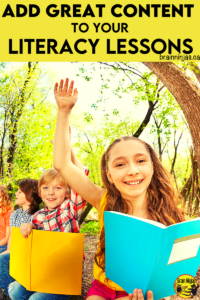
Yes, we’re getting to that. Not all of our students are currently working on their weekly reading skills. Students who are reading below grade level have similar activities and passages, but they are written slightly lower. It wasn’t possible to get every topic written for students right away, but we’ve been slowly writing for other levels.
We will also be adding different reading levels to the passage sets we’ve already created, but this will just take a bit more time.
This means students might be reading a different topic and completing different activities, but they are all doing the weekly reading skills during reading instruction.
Our reading groups are grouped by skills, not just levels, so no one in the class really knows why a group is at the table because it can be for so many different reasons. We do meet in levelled groupings from time to time as well. We like to mix it up as much as possible.
You can read more about Setting Up Guided Reading.
And Now for the Repetition…Worksheets?
Each activity works on a skill. Each of these skills has a mini-lesson in the teacher guide. Once a student has done this activity once (or maybe twice) they are usually able to do it again without much support.
This is the way our weekly reading skills work.
Each week, fewer and fewer skills are new, which means fewer and fewer need to be taught a mini-lesson. This means students are working toward independence.
If you’re wondering if this will be boring for students, we only use a skill twice within a month of lessons. This means a skill is reviewed roughly every two weeks. In the course of a school year that’s only eighteen times (assuming you have no short weeks or school disruptions due to worldwide pandemics). That’s not too much.
These are basically worksheets…if you use them as worksheets. We do not. Students do these activities and then we reinforce the skills in our reading groups with students. All of these skills can be used with any text that’s why it’s so important that students know and use them.
You might want to read: Setting Up Your Weekly Reading Comprehension Schedule.
What About Those Potholes?
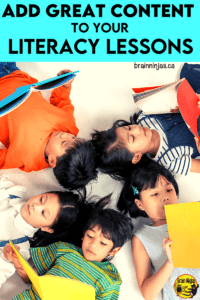
As we review the work students finish, we use that information to group our students in the next reading groups (or if the whole class is missing a skill, we teach it to the whole class).
When the potholes get filled, students take off so much faster. Their growth is huge and sometimes it’s difficult for us to keep up.
Within the first few weeks, we found that more and more of our students were finishing the whole set of activities well within the time they were given. This is when we started adding in the extra bonus activities in each set. These activities are meant to extend the skills and for lack of a better word-keep them busy with meaningful activities. These skills are designed to support science and social studies by working on specific skills like researching, writing, designing, and synthesizing.
Are you looking for other Language Arts ideas?
- Give Your Reading Instruction an Easy Twist
- How to Teach Reading With Book Clubs
- How to Use Google Meet to Run a Book Club
- Research Skills: How to Teach Text Features
- How to Celebrate Poem in Your Pocket Day
- Practical Strategies for Reluctant Readers
- Help! I Don’t Know How to Do Guided Reading
- Help! What Do the Other Kids Do During Guided Reading?
- Preparing For Guided Reading Groups
- How to Run Your Guided Reading Instruction
- Challenge Your Students with Writing Activities Every Day
- 22 Amazing Ways to Use Word Wall Words
- How to Include Different Types of Writing in Your Classroom
Get filling those potholes to send your students cruising.
Have you tried our weekly reading skills? We’re looking for feedback to help improve them and make them more useful. Please leave a comment below or contact us by email.

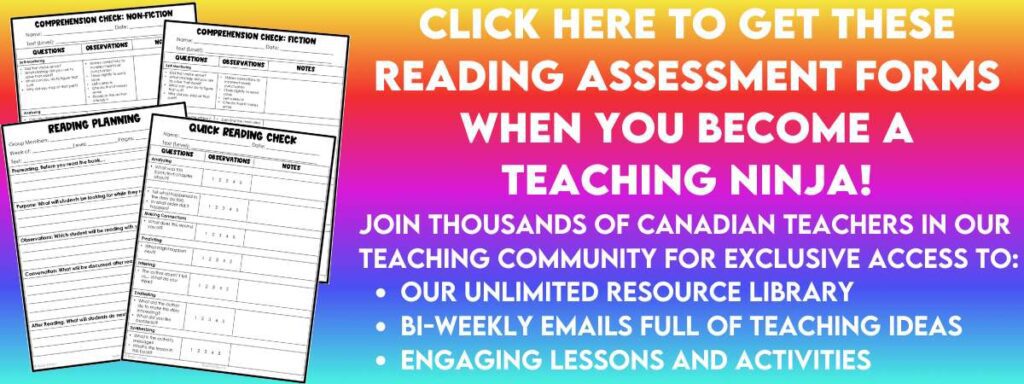
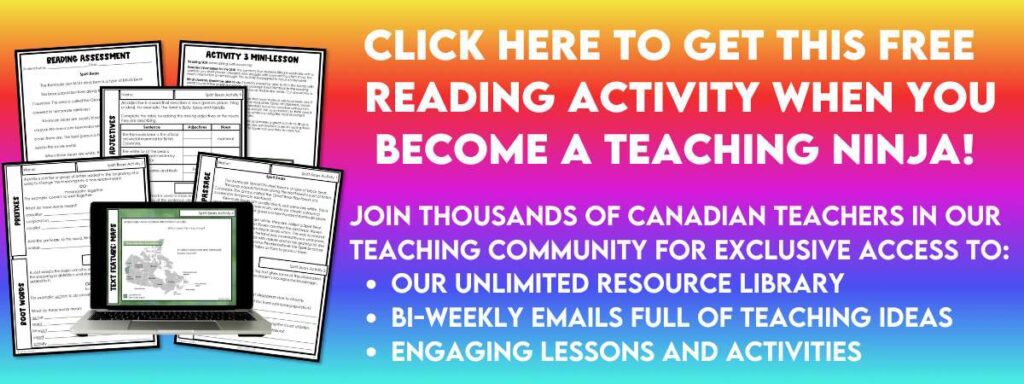
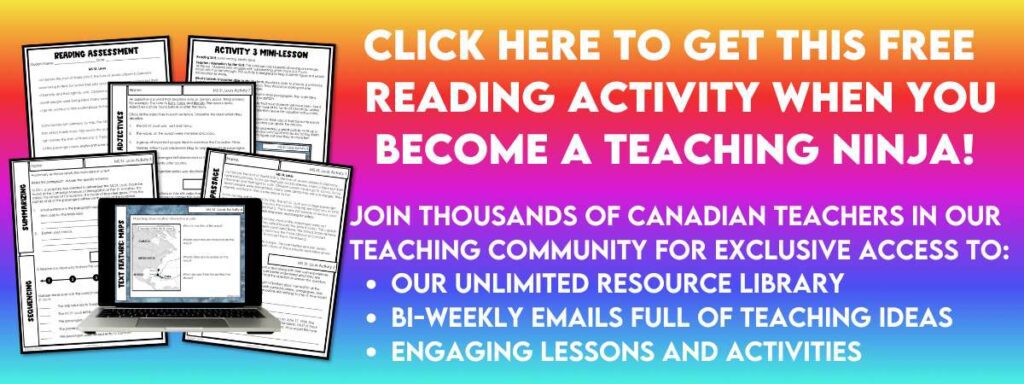






Would love to use this but the levels provided are too high. Will there be a Gr 3 level of the year long weekly reading skills set?
Hi Lori, Eventually yes. We’ve been holding off on any grade 3 products due to the change in the curriculum (and we expect social studies will be the biggest shift). Later this school year (probably January) we will start investigating writing some science related ones. It will depend on how the school year goes. 🙂 Make sure you’re following our TpT store and get on our email list so you’ll know when they arrive 🙂
I am applauding every part of this post! As an upper elementary literacy teacher, I always talk about how interconnected literacy skills like grammar, phonics, writing, and reading comprehension are. They can’t be separated, they must be infused together in our teaching!! I love your metaphor of reading as a road too. Thanks for the helpful links and for providing digital versions of your lessons. 🙂